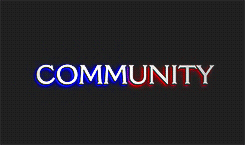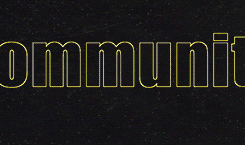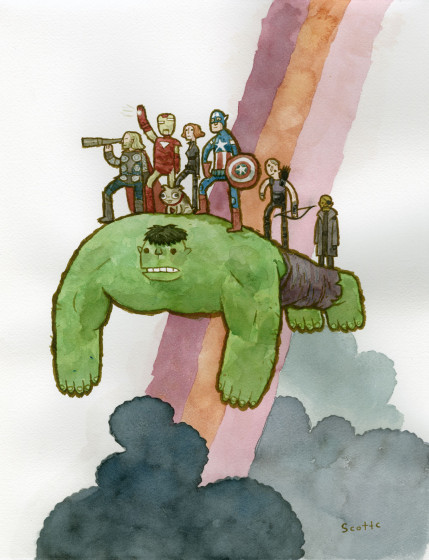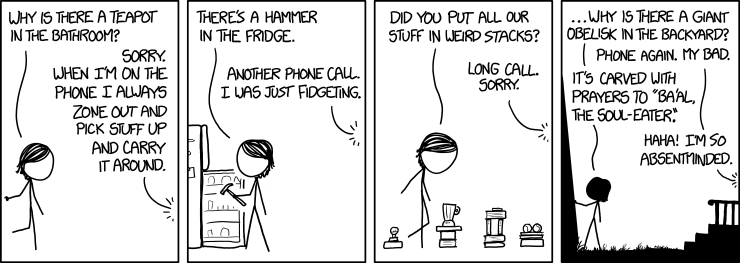I regularly take the the top voted question from readers and answer it in a post. With 41 votes, today’s winner was:
How would you start a career tackling big world problems? (Submitted by Steve Chung)
It’s certainly a wonderful ambition. What’s concerning is much like the saying “I want to change the world” it’s more about ego than the world itself. Why does the world need changing exactly? Why are you wise enough or worthy of the power required to change the world? Once you scratch the surface of the sentiment and think, just for a minute, about the history of people who wanted to solve big problems, much less the ones who succeeded, you’ll discover how narrow your focus needs to be.
The obvious answer is: Go solve some small world problems and work your way up. No one wants to hear this of course, but if you’re serious about the above question this has to be one of the strongest answers. To cure a disease takes a lifetime of study. To invent a new technology that saves energy, or write a novel that inspires people to be less mean to each other, or a thousand other world changing ideas can only happen if you’re committed to one path, at least for a time. Do you really think someone solved a big world problem in an afternoon? By accident? Do some homework and see what you find.
The real question then is how much work are you willing to invest in your dream? The dream is free, the work is not. Before you can solve big problems you need to learn how to solve many small ones and that will require patience and time. The bigger the problem you want to solve, the more of a commitment you’ll need to make. For fun look at the list of unsolved problems: there are plenty to pick from, and a small contribution to a big problem can have tremendous impact. Maybe start by picking a small problem that’s part of a big problem you care about?
1. It Doesn’t Matter Where You Start
When doing something big where you start does not matter. In our minds ideas are perfect and we imagine the world can turn in such a way that manifesting that idea in the world becomes easy. This prevents many people from starting. Like waiting for an ideal moment to cross a very busy street, a moment that never comes, many smart people stand on the sidewalk forever. They wait and wait, expecting a perfectly shaped path between the present and the dream, and in the waiting nothing ever happens.
We all know from life experience you can’t see much of anything from the outside. It’s only once you step inside the forest that you can begin to find your way through the trees. If you get lost you might need to step out and start again elsewhere, but it’s in the getting lost you learn insight into what you’re truly looking for. Even Elon Musk was involved in several companies before he created SpaceX and Tesla, two companies ambitious about the big problems of space exploration and transportation. But had he tried to start SpaceX first, he might have failed for the lack of experience and resources he gained from those first ventures.
Few people earn the grand reputation in their field of being the go to person for big problems and the ones who do earned it over time. Winston the Wolf from the film Pulp Fiction didn’t start his career as The Wolf. Queen Elizabeth wasn’t simply granted control over her country because she was born. It can take a career of dedication to earn needed trust from other important people. It may require specializing in a field, and narrowing your focus.
Firemen, SWAT teams and special operations military like Navy Seals are professional emergency problem solvers, but notice they don’t get to pick the problems they solve. They’re called in as the rescue squad, in service to people who perhaps weren’t careful enough to avoid creating the problem in the first place. Being a “big problem solver” might just mean you spend most of your time solving the same problems again and again. Every field has its set of consultants who get paid very well to repeat the same loop with client after client.
This is why it doesn’t matter where you start: no matter what you choose to do first you’ll have a long road of choices ahead. To get the most out of every choice you make, ask the people you find yourself working with three questions:
- What is the biggest problem you’ve tried to solve?
- What did you learn from the experience?
- What will you do differently the next time you take on a big problem?
2. Study People Who Solved Big World Problems
The second best way to learn how to live a certain kind of life is to read biographies of people who have already done it (the first best way is to know people who are already living that life, but that requires more effort than reading a book). Who do you think has changed the world? How did they achieve it? What sacrifices did they make? Where does the reality of their life not fit the fantasy you’ve seen in the movies? In any field there are legendary heroes, but the legends are always filled with myths. You need to do some hard work to uncover what their lives were really like and put into your own memory the benefits of their experience.
I’ve read about heroes like Buckminster Fuller, Gandhi, Michelangelo, Marie Curie, Van Gogh, Alexander The Great, and Bertrand Russell, and try to read about a new hero at least every year. Films like Malcolm X, Walk The Line (Johnny Cash) or Frida do provide some of what you need to understand, but films are dramas. They skip over the boring, daily work demanded to achieve anything interesting. It’s only by understanding the details of real lives that you can compare and contrast what your ambitions are, what you’re willing to do to achieve your goals and what you’re not willing to sacrifice.
Biographies are stereotyped as superficial, but that’s only the bad ones. A good biography explores the interior life of high achievers, and the internal, personal struggles they faced. If you want to follow in their footsteps you have to read about how they chose to take those strides and what it cost them. To your surprise you might discover that every big world problem was born from the previous big world solution.
3. Build Something You Control
Any big world problem demands the ability to make things, whether it’s robots, manifestos or political policies. The sooner you experience the psychological challenges of making an entire thing, end to end, where you are accountable for every part, the better. You will have no one to blame for the feedback you receive, forcing you to learn how to maturely seek feedback that can help you. Rarely in life do we get to put our name on something we make, but when we do it changes our relationship to the work and to ourselves. It is one of the few ways to discover our weakest skills, a discovery that’s good to make early (and more than once, as our weaknesses and strengths change over time). To the surprise of many dreamers, a common weakness is a lack of dedication to their own dreams.
Many people see books, films and the arts as the most leveraged place for a person with world changing ideas to work. It’s in these mediums they can make things unencumbered by anyone else and have a chance for thousands or millions of people to see their work. The writer or filmmaker chooses every word and every shot that makes it into their work, something most people in most organizations can never say. Getting people to care about what you make is another matter, but craft should come before marketing, and craft comes only from making things. In building things yourself, even as a novice, you may discover insights that experts in the field have long overlooked.
You may discover, in the actual doing of the work, that you enjoy solving small problems more than big ones. Or that it’s not the size of the problem that matters, but how much you care about the people who have the problem. For a young child in trouble, the lack of a friendly adult in their lives might be the biggest problem they have, and solving it for a specific person might be more meaningful than any number of inventions or awards. Our biggest liability as a species might just be we underestimate the big impact that solving small problems can have.
4. Build Something You Don’t Control
I’ve been spoiled by the freedom of software startups, so taking on the bureaucracy of government, cities and law turned me off.
The oldest and most important systems are the hardest to change, yet that’s where most of the big problems in the world are. World peace? World hunger? Space exploration? Crime? Health care? These are all grand problems that mostly involve forces you can never entirely control. Any big world problem hinges on collaboration, and working with people who have resources you need and can’t get on your own. Read about Susan B. Anthony, FDR, Margaret Mead or Marie Curie. How did they use power that wasn’t their own to achieve big things? The sooner you try to build something that depends on other people, the sooner you’ll learn that social and political changes are often far harder than technological and creative ones. The big discovery for would-be world changers is that persuasion is central to success: and how big a factor your reputation is in persuading people.
5. Think in Systems
Americans often forget that the President of the United States is not a dictator: his powers are muted, in the design of the U.S. Constitution, by the other two branches of government. This means to be successful a president must not only have ideas, but understand how to navigate those ideas through the complex politics of Congress. Systems thinking is a field of study that identifies the system, meaning the rules and the patterns, as having primary importance. Learning to think in systems gives an alternative view of why a problem exists, and helps separate causes from symptoms. To ask questions like “Why does this problem even exist?” or “What patterns does this problem follow compared to big problems in other fields?” is to look at the broader system view, where solutions to the hardest problems are often found.
- Who benefits from the Status Quo?
- When was the last time this problem changed dramatically for the better or worse?
- Who has proposed good solutions in the past and was rejected? Why?
- What are the assets and liabilities of the group that has power over this problem?
- Who is the most powerful person interested in change?
- What coalition can be built and what will unite them?
The Systems Bible by Gall is a comical introduction to systems thinking, particularly how a failure to think in system terms is a common cause of failure in trying to solve problems. The Logic of Failure by Dorner, explores how systems of decision making in organizations leads to avoidable failures. Learning to ask good questions is central to problem solving and systems thinking, and the best book on asking questions for problem solving is Are Your Lights On? By Weinberg. But sadly I don’t know of a single good book that explains how to use systems thinking to solve big problems. Perhaps that’s the first big problem one of you readers can solve.
—————-
What advice would you give to someone who wanted a career in solving big problems? Leave a comment.

































 …today, it’s Giant Buns! As you recall, Monday we showed you the
…today, it’s Giant Buns! As you recall, Monday we showed you the 
























 Well, this is rather surprising: Microsoft is in talks to buy Minecraft's developer, Mojang, according to a few different sources. The Wall Street Journal says that the ever loose-lipped "person familiar with the matter" has noted the deal is valued...
Well, this is rather surprising: Microsoft is in talks to buy Minecraft's developer, Mojang, according to a few different sources. The Wall Street Journal says that the ever loose-lipped "person familiar with the matter" has noted the deal is valued...
 [Image:
[Image:  [Image:
[Image:  [Image:
[Image: